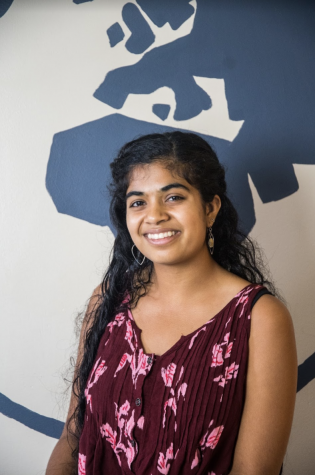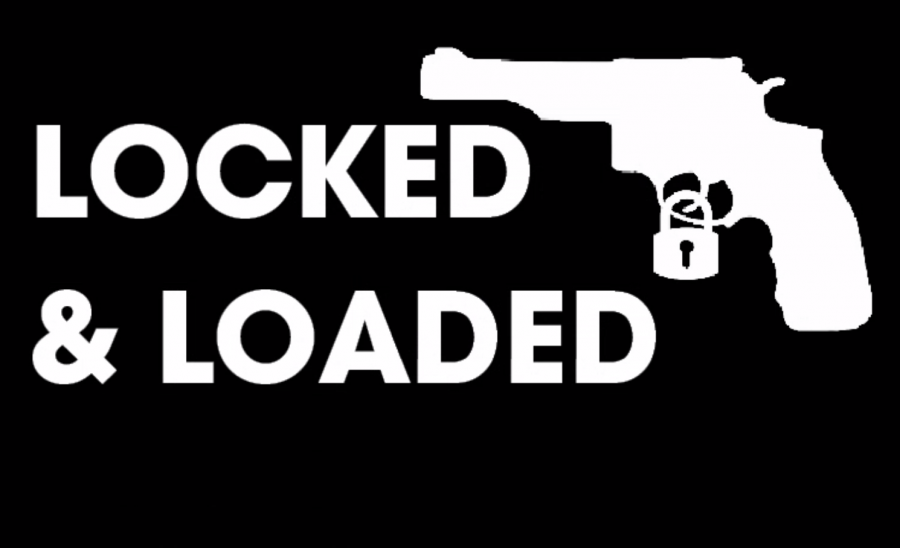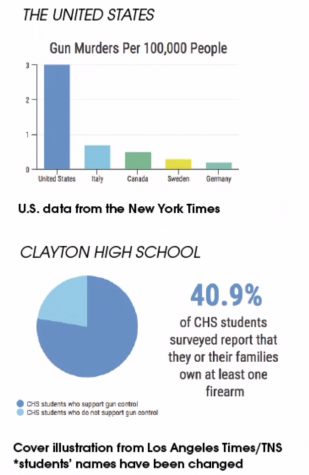On Wednesday, Feb. 14, 2018, a 19 year-old ex-student killed 17 people at Marjory Stoneman Douglas High School in Parkland, Florida. According to Everytown for Gun Safey, it is the 18th school shooting in the U.S. since the advent of 2018 and the 2nd deadliest school shooting ever.
For CHS senior Sol Kwon, who immigrated to the U.S. from South Korea when he was around 5-years-of-age, school shootings like this were a major concern for his parents.
“My mom and dad were very worried about the fact that somebody could just take a gun from the local store and then just use it to shoot anybody with,” Kwon said.
These loose restrictions around gun ownership and the prevalence of American gun violence in newspaper headlines stood in contrast to what Kwon experienced in Korea, and he even noticed this on vacations back in his country of origin.
“When I went back [to South Korea] from time to time, I was rather surprised that there were no reports at all regarding guns even regarding if there’s any murders or suicides that were covered in the national news or local news. Mostly they were not really gun related. I think that was a huge difference that we saw between there and America. [Gun violence] wasn’t really much of an issue,” Kwon said.
Guns are not completely outlawed in South Korea, according to Kwon. Still, the culture and level of restriction on gun usage varies greatly from the American model.
“Some people do actually use guns for hunting and sport, which there isn’t really much in Korea because it’s a really densely populated country. But in such cases like hunting and sport you need to have a special permit for that. And even if you do get that permit for the guns, they are usually kept safely in the local police station,” Kwon said.
According to GunPolicy.org, a global firearm policy and prevention database hosted by the University of Sydney’s Sydney School of Public Health, Korea only had 23 gun deaths in the entire nation in 2012 which amounted to 0.0 gun deaths per 100,000 people. In the same year, the United States had a total of 33,563 gun deaths which is equivalent to 10.69 gun deaths per 100,000 people.
While, as Kwon stated, guns are not fully outlawed in Korea, semiautomatic and automatic weapons are banned. This stands in stark contrast to the gun policies of the United States where the restrictions on automatic and semiautomatic weapons ranges from state to state. These powerful weapons tend to be the ones seen in mass shootings.
From Newton to San Bernardino to Vegas to Parkland, one semi-automatic model dominates them all: the AR-15. Nikolas Cruz, the suspect in the Florida massacre, obtained his AR-15 legally — the semi-automatic rifles were only banned nationally from 1994 to 2004 and present Florida laws are quite lenient allowing easy purchase of the firearms. In fact, the Law Center to Prevent Gun Violence, a gun-control advocacy organization, gave Florida an “F” rating for its lax gun laws.
However, in the same annual “Gun Law State Scorecard,” Florida was not listed as one of the ten states with the highest rates of gun deaths. Rather, Alabama, Alaska, South Carolina, Montana, Wyoming, New Mexico, Louisiana, Mississippi, Oklahoma, and Missouri made the list.
The openness of Missouri’s gun laws began in 2007 when lawmakers in Jefferson City repealed the permit-to-purchase handgun law which required those seeking to buy a gun to undergo a background check by national or state law enforcement agencies in order to receive a permit allowing this transaction.
“Since that time, our legislature has chipped away at our gun laws with things like open carry and the thing that came in January which was permitless carry and stand your ground, which Governor Nixon had vetoed but they overrode it and that basically eliminated permit and training requirements to carry guns,” Coleman said. “While that hasn’t been explicitly studied yet, we can see that homicide rates have increased, gun assault rates have increased, carjacking rates have increased, thefts have increased so you can’t help but think that the cities are kind of suffering because of what the state legislature is doing.”
Despite the effects of the newest policies loosening gun restrictions not having been studied, the 2007 repeal of permit-to-carry was. In 2013, a study was published by the Center for Gun Policy and Research in the John Hopkins School of Public Health detailing the spike in firearm homicides after a full year of the nonexistence of permit-to-purchase.
According to the study, Missouri’s firearm murder rate remained relatively constant, around 4.66 deaths per 100,000 people per year. After a year of no permit-to-purchase in 2008, the gun homicide rate increased from 4.66 to 6.23 per 100,000 people which was a 34% increase from the original average. This change did not adhere to any national or regional trends, only applying to the state of Missouri.
Such data and the increasing homicide rates have brought gun policy to the forefront of Missouri politics.
Currently there are more than 20 firearm bills proposed by both republicans and democrats in Missouri congress. While the few republican bills are attempting to further remove firearm restrictions, the majority of the proposals are by democrats representing the two main cities in Missouri — St. Louis and Kansas City — trying to pass gun control laws. However, Coleman believes that the gun lobby’s influence in Jefferson City will prevent any of these bills from becoming laws.
“We have a supermajority in the GOP and the gun lobby is just really entrenched there: they write these gun bills and then if they get to the floor for a vote, they pass because the National Rifle Association (NRA) is threatening and they will say ‘we’ll come after you if you don’t vote our way,’” Coleman said. “In private we’ve even had legislators tell us ‘I don’t want to vote for this bill but I have to,’ which isn’t how government is supposed to be run.”
The infiltration of the NRA in Missouri politics is evident through the NRA backing of Missouri senator Roy Blunt. Blunt has received $4,551,146 from the NRA — for donations or to help his campaigns — according to the Center for Responsive Politics, a nonpartisan research group.
Moms Demand Action, as a nonpartisan organization, is attempting to alter this status quo by connecting with republican members as well.
“We do have republican members here in Missouri and across the nation [although] we don’t have any republican politicians interested in joining us. We are not anti-seocnd amendment and we don’t want to take away anyone’s guns unless you’re a criminal or domestic abuser. We think [gun violence prevention] should be a bipartisan issue because it really already is,” Coleman said.
Especially in states like Missouri with a large rural population, the organization also is attempting to reach out to those communities whose representatives tend to be the ones following NRA interests.
“Our goal is to get as many people involved in the state as we can because a lot of legislators that sponsor what we call bad gun bills are from those rural areas so they really need to hear from people in there districts. People from St. Louis — our voices might not be as meaningful to those legislators as people in their districts,” Coleman said. “I think there’s this misconception across Missouri that everybody in rural areas is against common sense gun laws which we’ve really found is not the case.”


